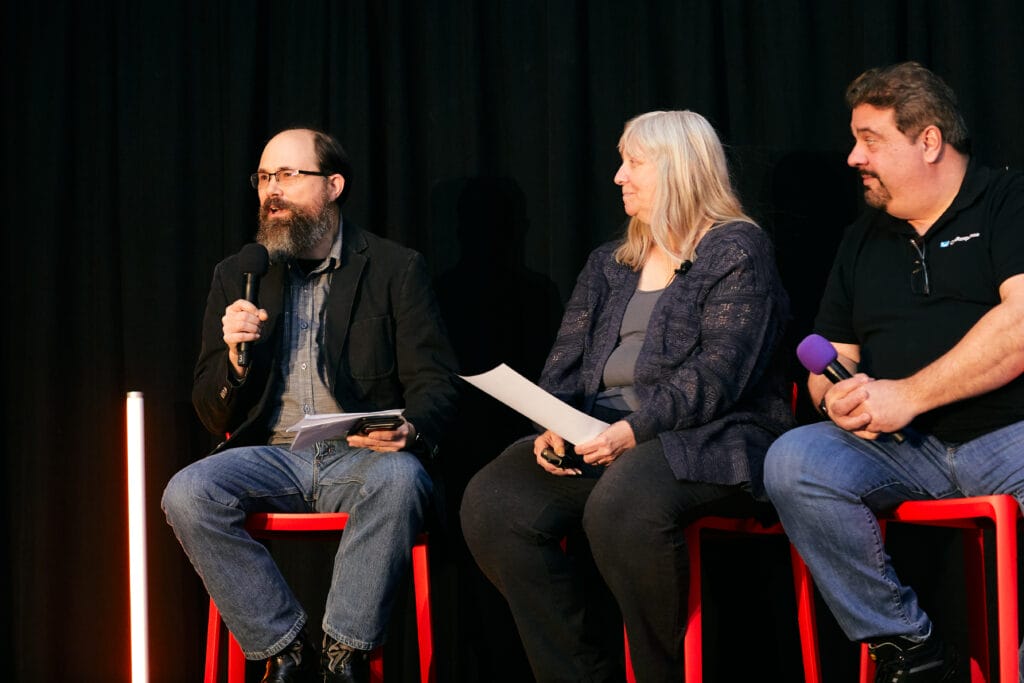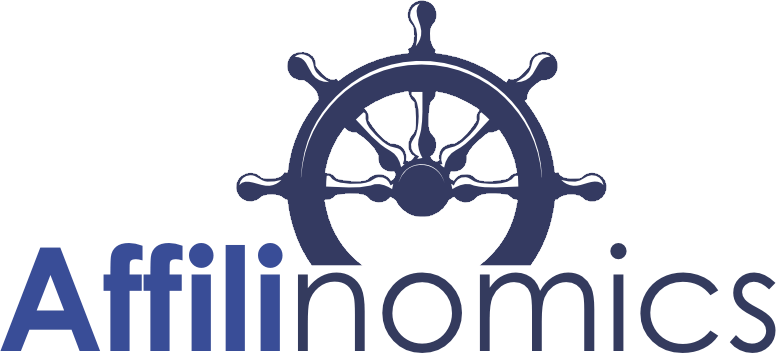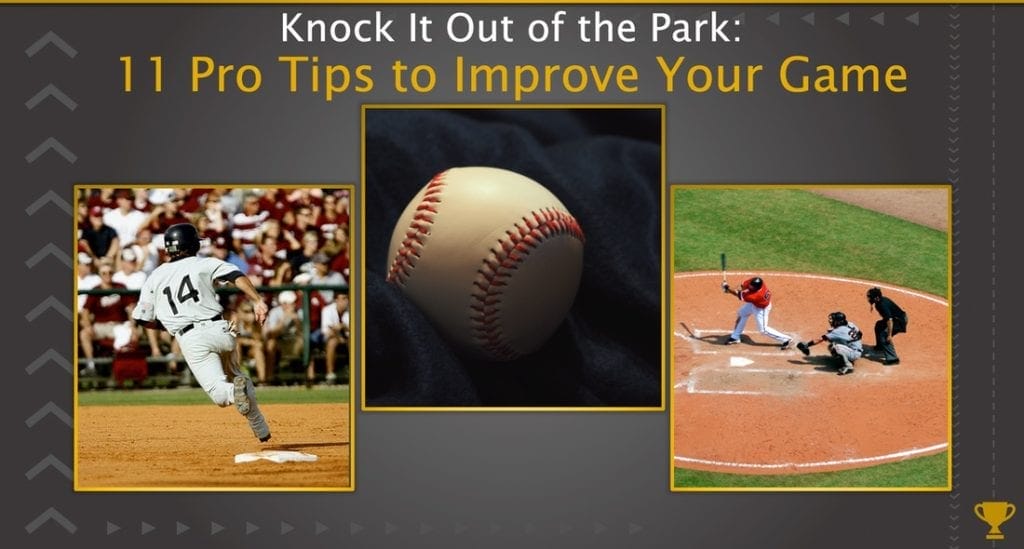After missing the past two years, I once again had the privilege of joining Jeannine Crooks, Partner Development & Acquisition Manger at Awin, and John LoBrutto, Head of Affiliate Marketing at GetResponse, for a 30-minute panel presentation at Affiliate Summit West 2023 (ASE23) in Las Vegas. Given that we are in Vegas, we presented a card-themed presentation entitled “Play Your Best Hand: 6 Tips for Winning in Affiliate Marketing.” We used various winning poker hands throughout our presentation as a metonymy to discuss key ingredients found within successful affiliate marketing. As has been the case for most of our panel presentations, this one was also designed to be more introductory level and affiliate/publisher-focused.
With my fellow panelists permission I’m sharing our slide deck below. You may view them online or download them as a pdf document. We divided our 6 “winning hands” into the following affiliate-related focal areas in which we could share tips and recommendations:
- Straight – Networks & Partners
- Flush – Traffic & Site Optimization
- Full House – Conversions & Commissions
- Four of a Kind – Tools & Best Practices
- Straight Flush – Communications & Metrics
- Royal Flush – Taking Risks & Growing Campaigns
Please note that I’m adding some additional resources below the embedded deck. Also, for the sake of simplicity, within this presentation we often referred to affiliate advertisers as merchants and affiliate publishers as simply affiliates.
Audio of this Presentation (includes Visuals)


Additional Resources & Recommendations
Disclosure: In light of this affiliate marketing topic, I’m pleased to report that some links shared below are affiliate links.
Slide 8 (“Flush”) – Traffic & Site Optimization
“Traffic”
Prospective Customers
Regarding SEO (search engine optimization) efforts, many affiliate marketers feel they have to “please” Google or else they won’t receive any “traffic.” Traffic (assuming it’s not bot visits), is made up of people. These people are your potential customers, but their presence on your site is useless to you unless they trust your site’s content. Google may have brought them to you but Google can’t make them stay. Furthermore, if they hit the back button a few second after landing on your site then Google’s algorithm will likely take that into account and reduce future visits from other people (conversely, if people find your site trustworthy and of value then Google is likely to reward you with more visits).
Consider this article about building trustworthiness in your content. Google has a core concept within their Search Quality Raters guide called E-A-T (Expertise, Authoritativeness, and Trustworthiness) that is worth learning more about (especially for sites that are related to YMYL topics — that is, those involving Your Money or Your Life).
Your Marketing Plan
In building your content (and reputational authority), many have found it helpful to establish a routine. This can be done by creating what I call a “marketing cadence.” Many bloggers and marketers follow a formal editorial calendar (here are some marketing ideas you could use). Others find value in a simple task list or even a daily routine helpful.
Regarding my affiliate and other responsibilities, I’ve found three tools helpful for managing my various task lists (especially recurring tasks). They are Stacks (very private and simple), Things (ideal for syncing across devices), and Ora (more advanced features for use with teams).
Long-Term / Trust
Your Brand (& Business)
Social media is a great alternative to Google and provides a way to avoid building costly outreach tools and efforts yourself. However, all users should know that what they post on these platforms they don’t really own — it’s what I like to call “rented space.” My advice is to go ahead and use social media to your advantage, BUT, at the same time, build your own content base, email list, and other marketing channels that you actually own.
These marketing channels you created become part of your brand and your reputation. In short, they can help you fill out the E and eventually the A of Google’s E-A-T.
Become a Trusted Resource
One way to build your brand is to add value (and sometimes your own style) to everything you do in your space — articles, videos, tweets, etc. Many have found success by expertly answering questions, adding personal insights, and giving away trusted information they developed.
While working these opportunities noted above and building trustworthiness within your space, before long you may find your project has become a profitable business. As revenue increases you’ll have more opportunity to grow so take it seriously from the beginning by keeping proper records and maintaining your reputational integrity. This is likely to include recommendations that are not always monetized with affiliate links (though you may benefit from services like Skimlinks or Sovrn that auto-convert regular links into affiliate links and share the revenue with you). Your recommendations are likely to include products not always available at Amazon or the common “big box” brands.
Finally, for U.S. content, the Federal Trade Commission (FTC) requires affiliates to disclose their use of affiliate links (more details here) so be sure to do this. Your disclosure can be creatively written in a way that reflects your style.
Slide 14 (“Four of a Kind”) – Tools & Best Practices
Useful Content
Consider Using WordPress
Since content is where your reputation lies, it makes sense to deliver it securely, accurately, and in a way that is convenient to your readers and users. As a website content management system (CMS), WordPress has become by far the world’s most popular option and for good reason.
One of the best things about WordPress is the many ways in which it can be extended for many purposes. It is also open source software so the core of it is free to use as you see fit. This broad flexibility has allowed the development of an extensive ecosystem for WordPress plugins and support services. Given the open nature of both WordPress and WordPress support, one should be careful in choosing what they deploy so as to not compromise security, site speed, and other critical things.
Invest In Quality Resources
One way to avoiding compromising the essentials is to invest in quality web hosting that includes a staging environment that you can use to clone your site and then test changes on it before pushing them to the live site. Most quality hosts also include automated and on-demand site and database backups. I also recommend adding a separate offsite backup system to your mix just in case your web host suffers a severe outage.
Two web hosts I’ve personally used and can recommend are SiteGround (on the budget side) and Kinsta (on the more feature-rich side). When you get more comfortable with things (or include more sites in your portfolio), you may wish to move into hosting sites yourself on cloud server platforms like UpCloud, Vultr, or Linode (free trial credit offer), for example. Doing that provides even more flexibility for you and can produce significant cost savings if you host more than 5-10 sites, especially if they are large sites. If you choose to go that route, I recommend trying GridPane or SpinupWP.
As for content layout within WordPress, I recommend one of three things: (1) use the default Gutenberg Editor that comes with WordPress, or (2) use Gutenberg and extend it with some tools like Spectra (completely free) or Qubely (freemium), or (3) replacing Gutenberg’s functions with a page builder system such as Beaver Builder (very easy), Elementor (more advanced and complex), or Divi — and there are other options including a very fast new one called Breakdance that can even eliminate the need for a WordPress theme!
Tools & Automation
Content Changes
In affiliate marketing you have a lot of content to evaluate. There are many tools that can help you do that more easily. You can scan many pages automatically for things like price changes or content updates without having to go to them manually yourself. Invest in a tool like Pagescreen (visual page comparison) or Hexowatch (many advanced scanning features) for this. You can even turn structured content into CSV files for importing into your site with tools like Hexometer or Browse AI.
Site Analytics & Monitoring
As for site analytics, it seems most people simply install Google Analytics and then struggle through the complexities without really understanding what their site visitors are doing. There are, in my opinion, many far superior alternatives to Google Analytics that deliver much easier to understand and visually-appealing (and actionable) reports. Here are a few I use and recommend: usermaven, Clicky, and Visitor-Analytics (all have free tiers). Another advantage of using third-party analytics is you own your data (instead of giving it away to Google).
In the area of site uptime and monitoring, I recommend not skimping on this — after all, if your site is down then your revenue is down as well! There are some really great tools like Better Uptime, Uptime Robot, and MonSpark (all have a free plan) that excel at these things (and, in the case of MonSpark, much more). Also, if you’re using WordPress and invest in Malcare, they include a simple uptime monitor (and also alert you to vulnerable plugins on your site that need to be updated plus provide daily offsite backups with 90-day retention, and much more). In addition to Malcare, there are other helpful tools for managing multiple WordPress sites (including offsite backups) with ManageWP or WP Umbrella.
In all your work, don’t forget to check your page loading speed. Some tools like MonSpark can automate this for you but you can also do this “on-demand” from various locations around the world using GTmetrix (free version is sufficient for most, plus it includes some very useful insights to help you speed up and optimize your site’s performance).
Link Management
It’s challenging to manage more than a few dozen affiliate links by hand with all the changes some of them go through — and that doesn’t even address keeping track of where they are buried within all your content on various pages on your site. What if I told you it was possible to do all this from a single dashboard — and make your own branded short links in the process? Yes, you can do that!
If you’re using WordPress and all your links are for a single site then the free version of the Pretty Links (or ThirstyAffiliates) plugin may be all you need. Pretty Links enables you to create a simple, short, and branded to your domain URL that redirects to the affiliate (or other) link you specify. From the Pretty Links dasboard within your WordPress admin panel you can view all your created links, along with some basic analytics on clicks and usage (premium version has other more advanced features), and from there update the landing page URLs as needed. If you are not using WordPress, have heavy traffic, or post a lot of these short links to social media, I recommend using Switchy.io or RocketLink.io instead to do essentially the same thing.
A Word of Caution
While most writers consider SEO in their efforts, some take it too far and end up writing for Google and not their target audience of people. [Regarding SEO plugins for WordPress, you may want to consider Yoast SEO, SEOPress, or RankMath (free and premium options exist for each).] Some even go as far as scraping the content of other sites that rank well and then posting it on their own site as their own (which is likely to get their site penalized or even “banned” for duplicate content by Google).
Others deploy cheap AI writing software [AI meaning artificial intelligence that can “spin” content based on a formula applied to certain keywords or source data]. Again, content such as this is typically very “thin” in value and instantly recognizable by human readers as inauthentic and, bluntly put, useless. The browser back button is hit and Google eventually tags your site as one of low value due to short time on the site by known human users they monitor.
Innovate
Instead of the above, and, to wrap up this section… if you’re focused on the values that Google identifies as E.A.T. then you’ll need to be committed to being trustworthy from the beginning. As you seek to serve your audience, you’ll continually educate yourself and that improves your expert status within your target space. As your writing expands and you grow, your authority, as viewed by your audience and (hopefully) rewarded by Google, will expand — resulting in increased rankings and ultimately revenue. You may need to hire competent help to scale this process, but in the end, you’ll have a truly valuable business asset (and if you followed the above suggestions, this will be your brand!). With an asset like that, your site may become an acquisition target!
Additional resources: “WordPress Tips for Affiliate Marketers” — includes my presentation and handout for the 2022 PMA Virtual Conference with over twenty specific WordPress recommendations.
In Conclusion
As we’ve said before, affiliate marketing is exciting and ever-changing. With that in mind, please get involved within our affiliate industry and share your expertise. A wealth of affiliate resources are available at no charge but know that not everything claiming to affiliate marketing can honestly fall within the E.A.T. category. As with anything, be on the alert for those who are less than ethical. Consider also joining the Performance Marketing Association and attending other reputable affiliate networking events when possible.
You have a winning hand! You may not know exactly what that hand is yet (as all your cards have not been dealt to you) but do know that you can do affiliate marketing. You have what it takes to win!
Updated 07-Apr-2023: Included an audio version of our panel presentation and two photos of the speakers.





Shame to have missed this session Mike. Looks pretty thorough with some great advice for anyone newer to the affiliate game.
Thank you, Chris! I’m sorry to have missed you at Affiliate Summit West.